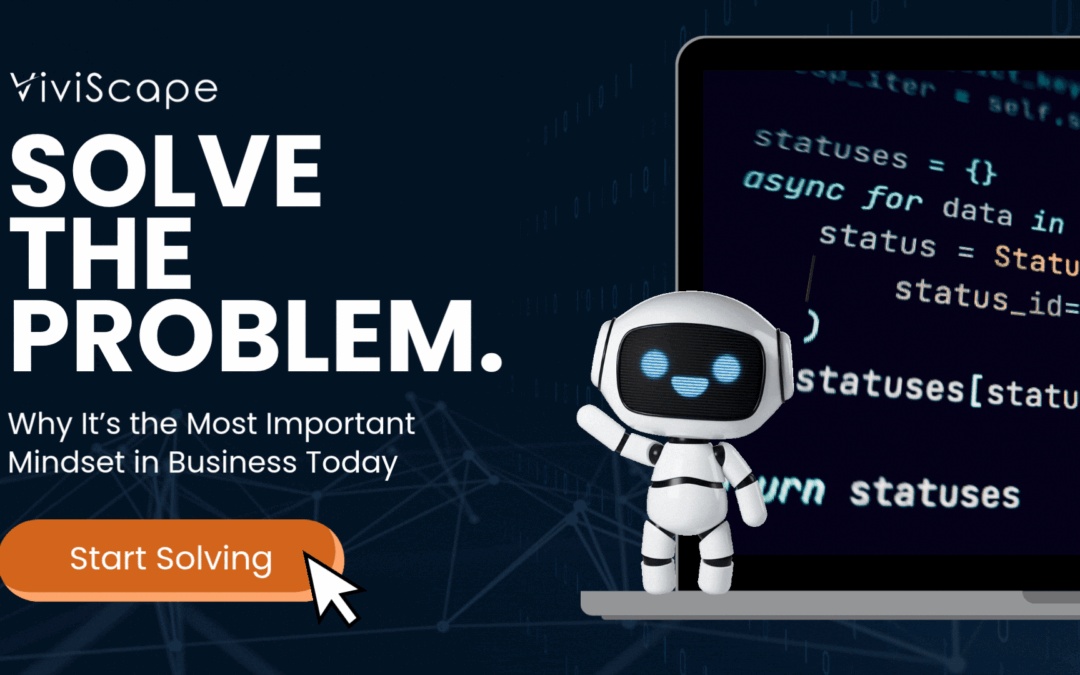Every business is in the business of solving problems.
| Some problems are obvious: | Others are harder to spot: |
| Orders not shipping on time | Workarounds hiding broken processes |
| Customers waiting on hold | Tech stacks held together with duct tape |
| Employees spending hours on data entry | Missed opportunities because systems can’t talk to each other |
The question isn’t whether your business has problems.
It’s whether you’re solving the right ones.

“Solve the Problem.” Isn’t a Slogan. It’s a Survival Strategy.
In today’s fast-moving markets, the companies that win aren’t just the biggest or loudest—they’re the ones who respond fastest to friction. The ones who treat inefficiencies as temporary, not permanent. The ones who resist the urge to patch symptoms and instead dig deep.
Too often, businesses build workflows around their software instead of building software around their workflows. They adapt to pain instead of eliminating it.
That’s not resilience—it’s resignation.

Why “Solving the Problem” Should Be a Core Value
1. Because Complexity Compounds
Left alone, small issues become big barriers. Manual tasks pile up. Shadow processes emerge. Costs multiply.
Solving root problems keeps your business lean and scalable.
2. Because Employees Deserve Better Tools
No one was hired to copy-paste spreadsheets or navigate five systems to do one task.
The more you streamline, the more your team can focus on high-impact work.
3. Because Customers Feel the Friction
Whether it’s response times, onboarding, or service delivery—your internal inefficiencies are your customer’s frustrations.
4. Because AI and Automation Are Useless Without Clarity
You can’t automate what you don’t understand. You can’t improve what you don’t measure.
Solving the problem starts with visibility, then moves to intelligent action.
How to Start Solving Problems Strategically
Listen to the people closest to the work
Your frontline staff can tell you where the friction is—they just need to be heard.
Map your processes
Before you digitize or automate, understand the actual flow. Then remove steps that don’t add value.
Use technology as a tool, not a crutch
Software should simplify, not complicate. If you’re building workarounds, it’s time for a change.
Invest in long-term solutions, not short-term fixes
Custom software, AI, and automation can transform operations—but only if they’re aligned with your real-world challenges.

Final Thought: Solving Problems Is the Job
Every business leader, every department head, every entrepreneur shares one mission:
Find the friction. Remove it. Repeat.
“Solve the Problem” isn’t just a task—it’s a mindset. One that turns complexity into clarity, and chaos into progress.
Ready to uncover what’s holding your business back?
💬 Schedule a free discovery call with our consulting team today.
No pressure. Just practical advice that can move your business forward.

